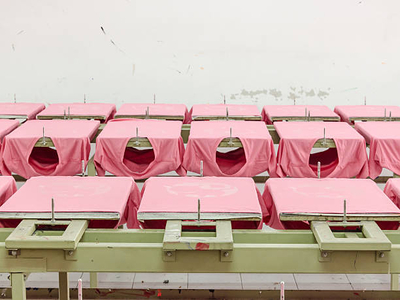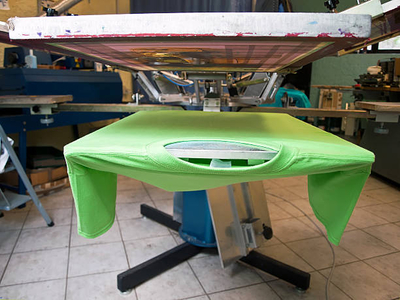When it comes to t-shirt printing, high-quality results begin with high-resolution artwork files and proper formatting.
In this post, we’ll discuss the different types of file formats for t-shirt printing, the best file format for t-shirt printing, and how to make sure your images are always formatted properly.
Problems with Low-Resolution Files
Many customers are unaware of just how important high-resolution is and provide low-resolution files, which can lead to a number of problems.
Because low-resolution files have fewer pixels, they must be enlarged to fit the desired print size, resulting in blurry or pixelated images.
In addition, low-resolution files often lack the necessary detail for complex prints, such as those with gradients or fine lines.
As a result, it’s important to educate customers on the importance of providing high-resolution artwork files.
By doing so, you can help ensure that your prints are of the highest quality.
Best File Format for T-Shirt printing

When it comes to digital images, there are two main types of files: vectors and bitmaps.
Vectors are made up of a series of lines and curves, which can be resized without losing any quality.
Bitmaps, on the other hand, are made up of a grid of tiny pixels, which tend to become blurry or distorted when they are enlarged.
As a result, vector images are often used for logos and other graphics that need to be reproduced at different sizes, while bitmaps are better suited for photos and other detailed images.
Both types of files have their own advantages and disadvantages, so it’s important to choose the right file format for each project.
Bitmap Files
As anyone who works in the digital publishing industry knows, bitmaps are one of the most common file types used in digital content.
This is because bitmaps are comprised of a grid of individual pixels, which are essentially minute squares that each hold their own color value.
Bitmap files come in two primary forms: JPEG and TIFF.
JPEGs tend to be the more popular choice as they can compress images without compromising visual appearances too significantly, retaining a balance between image quality and data size.
This compression ability makes them perfect for use in online publications or other formats where storage space is limited.
Meanwhile, TIFF files are typically reserved for more high-quality uses such as print media, where image fidelity matters more than file size.
The video below is a helpful comparison of a TIFF file saved as a JPEG versus using the original TIFF file:
Overall, bitmap files continue to play a key role in digital publishing due to their flexibility and effectiveness.
Read More: How to Put a Printed Photo On a Shirt. Here are a few different methods to try!
Difference Between a Vector File and a Bitmap File

A vector graphic is a type of image that is created using mathematical points, lines, and curves and is usually created in Adobe Illustrator or another similar program.
One of the advantages of vector graphics is that they can be scaled to any size without losing quality because they are not made up of a grid of pixels, like bitmap images.
Instead, they are made up only of the mathematical points that define the shape. As a result, vector graphics can be used for both digital and print applications.
Vector graphics do have a number of advantages, including the fact that they are considerably smaller in file size than bitmap graphics.
The reason is straightforward: bitmap files must store data for each pixel, whereas vector files only require information about the objects’ points.
When you make a bitmap picture larger, the graphic’s edges will progressively get blurrier and the file size will grow as a result of the additional pixel data.
Thankfully, vector and bitmap files can exist in a variety of forms and the majority of image editing programs allow you to save your picture in a variety of file formats.
We’re going to summarize the most common file formats next, along with some information about them so that you know what you have or what to name your file.
Read More: Thangs 3D models. Interested in 3D printing? This 3D printing search engine can help you find any model you want!
Vector Files
A vector file may include bitmap files but not vice-versa.
One type of vector file is the PDF (also known as Portable Document Format).
It’s the most common file type and was designed to be consistent, so when opened or viewed on virtually any operating system, original typefaces and layouts are preserved.
Another frequently used vector file type is EPS (.eps), or Encapsulated PostScript, a trustworthy format that is often self-contained and ready to use.
CorelDRAW can save EPS files but Microsoft Office is a huge program that will not let you export files in a .eps format.
Adobe Illustrator (.ai) is a native file type of Adobe Illustrator and is the top vector graphics program.
But, it is an advanced program and it is recommended that creators be specialists.
If you’re looking for a good vector editor but don’t have the funds for Adobe Illustrator, or time to learn, Inkscape is a free alternative that many people seem to enjoy.
All things considered, if you are not sure which one to choose, don’t sweat it. Any of them will suffice.
Vector Files: Pro Tips

Use “Outlines” To Describe Your Fonts
When working in vector format, it’s important to carefully choose the fonts that you use in your design.
In most cases, you’ll need to use a font that isn’t already installed on your computer, as these types of fonts are strictly used for print and web-based designs.
There are several different options available when it comes to vector fonts, including outline fonts and stroke fonts.
Outline fonts are created using vector paths that describe the shapes and lines of a given letterform or symbol.
This type of font gives you great control over the thickness and style of your letters, allowing you to create crisp, clean text with any amount of detail or complexity.
Another popular option for vector font design is stroke fonts, which consist of simple strokes or ‘outlines’ around letters and symbols.
Like outline fonts, stroke letters can be customized to create any number of unique effects and styles.
Whether you opt for an outline or stroke font, choosing the right typeface can help ensure that your design looks professional and polished at every stage of development.
Once you choose the right typeface, select all of your types in Illustrator and choose “Generate Outlines” under the “Type” menu.
After you’ve done this, your fonts will be text shapes that are ready to be printed.
Articles You Might Want to Read: